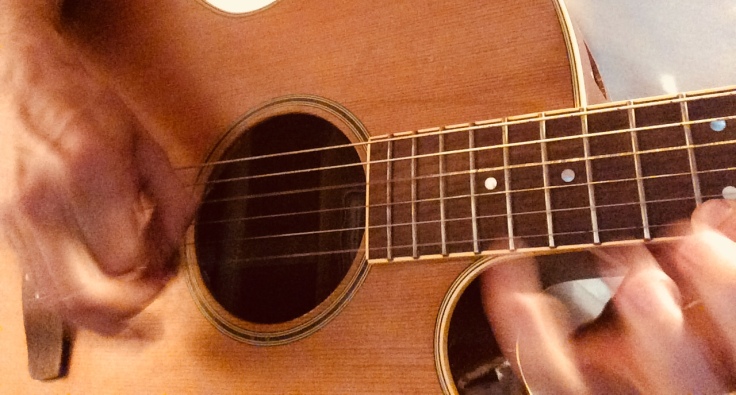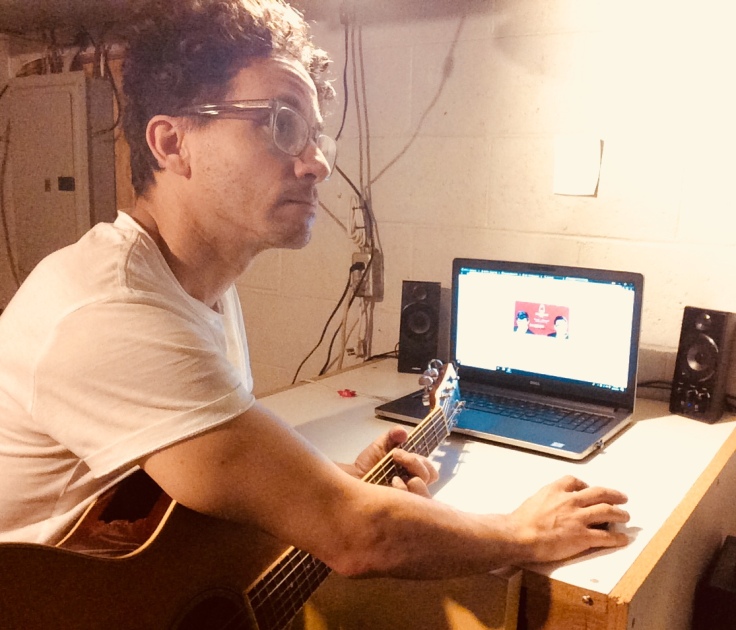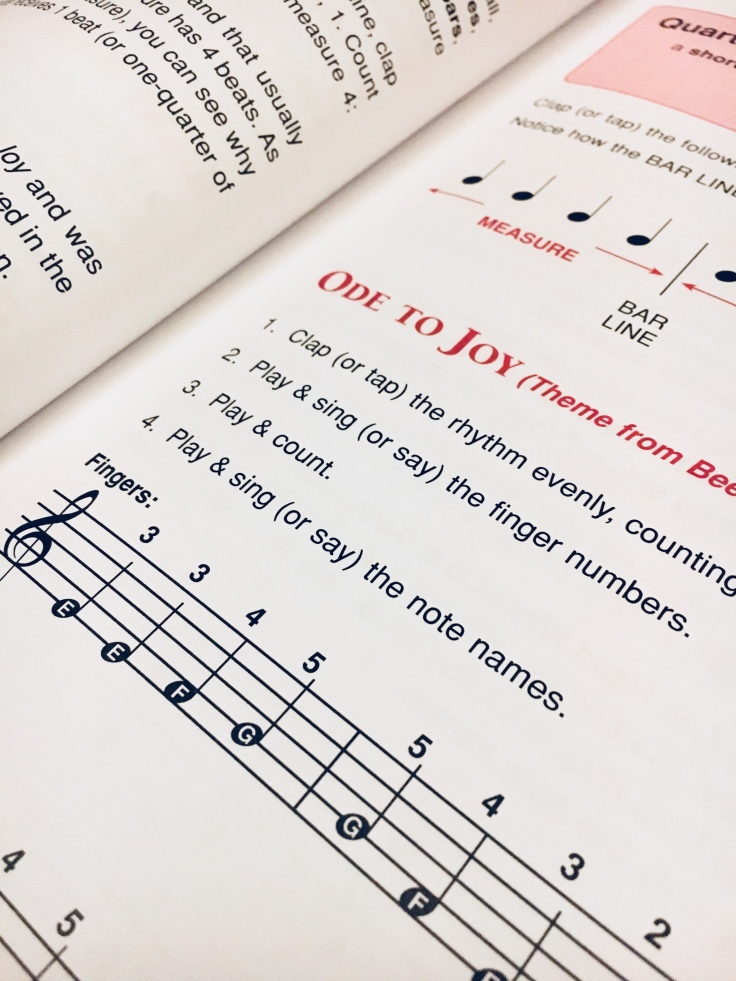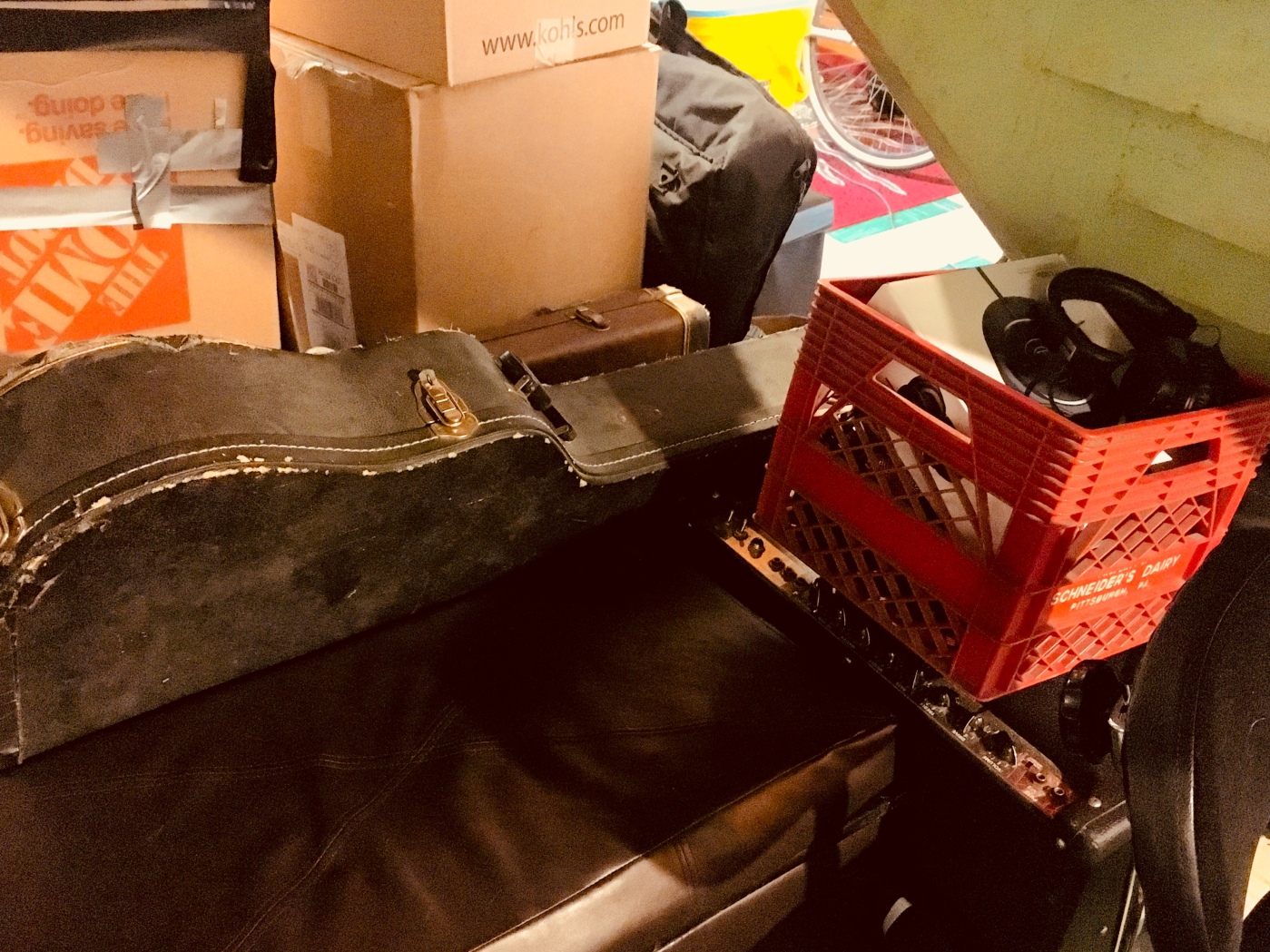Introduction
The attics and basements of the world are filled with abandoned guitars, keyboards, and trumpets.
The reason people have turned their storage spaces into musical-instrument depositories is that learning to play and sing is hard. Indeed, most people fail in their musical endeavours. In my experience, I’ve encountered seven, especially harmful, mistakes that are responsible for most of this failure.
Below is a detailed list of these mistakes.
(1) Writing in the Note Names

Writing in the note names is the number one sin committed by students.
This behavior is more intractable than a staph infection in a third-world hospital. For example, I will say explicitly to a student, “do not write in the note names,” but the next time I see them I’ll see their shameless annotations perched above every note.
“What are you doing?” I’ll ask.
And they’ll inevitably say something about not being able to read because “it’s too hard.”
“I know it’s hard,” I’ll say. “That’s why you take lessons, but I can’t help you if you don’t listen to me.”
Students need to understand that writing in the note names guarantees failure. Assuredly, it makes things easy in the short-term, but in the long-term, it systematically annihilates all other musical skill sets including memorizing, transposing, counting, and performing.
Writing in the note names is equivalent to learning to read French by writing in every English word. So, just don’t do it.
Force yourself to memorize the staff and where the notes exist on your instrument. Ask yourself, “what note is this,” then say that note-name aloud. Once you’ve accomplished this, find that note on your instrument. Do this, without reprieve, for as long as your concentration can hold out.
Before long, you’ll begin to make sense of reading notation.
(2) Not Counting

Music is a product of tones organized over time. Without time, there is no music—just noise. Counting is the best way for students to make sense of this concept.
Counting aloud functions like temporal graph paper: If you want to draw a parabola in math class, then you should use graph paper; if you want to play a song in music class, then you should count—preferably aloud.
There is no way around this fact. It is as sure as night following day. If you’re not counting, whatever else you’re doing, you’re not playing music.
Here’s the problem: almost no music student inhabiting this mortal coil wants to count. It’s hard and it detracts from the musical sounds. For these, and other, reasons, students hate the activity.
However, not counting is music-destroying stupidity.
(3) Memorizing Too Soon

Many students read through a measure of music just once before instantly converting that material to memory.
This is the wrong way to read and memorize music.
Only after many, careful read-throughs with a metronome should you begin to memorize. Then, even after the music is memorized, you need to return to the source material periodically to ensure accuracy.
Almost no musician adhering to this globe operates this way.
Indeed, most are content to build a song out of memory-legos by relentlessly playing one measure at a time until it’s memorized before moving on to the next measure and repeating the process.
I admit that some version of this measure-by-measure approach eventually needs to happen, but it’s best to read through the piece in continuity before attempting to build a memory train.
(4) Playing Too Fast

Once a musical passage has been learned, students should hunker down on playing it with utmost clarity and accuracy.
Sadly, this is hardly ever done. Instead, students attempt to play the music as if each note is being fired from a Howitzer—that is, at maximum velocity in a manner designed to terrify and destroy other musicians.
Playing your instrument obnoxiously fast is like masturbating—an act designed for your own gratification.
Besides a few other like-minded players, people generally don’t care how fast you are. Music is not a race, and getting to the end of the song as fast as possible is not the goal.
Speed comes with time if you slow down and strive for clarity. The disciplined use of a metronome is key here.
(5) Playing Without Purpose While Distracted or Lost in Thought

Playing an instrument is hard on your body. Therefore, you should limit this wear and tear by only playing with purpose.
If you are practicing in a desultory way while half-focused, then two problems crop up: (1) your muscle memory becomes corrupt, and (2) you chance for injury becomes greater.
If you’re not focused on the musical task at hand, then you may begin to practice making mistakes.
Muscle memory is formulated through repetition. So, if you are sitting there watching Netflix and playing some musical passage over and over again, you may be playing it wrong. The result is confusion and error.
After playing a musical instrument for decades without reprieve, your body will begin to hurt. Tendonitis, carpal tunnel, synovitis, and arthritis are occupational hazards for musicians, so you should ensure that any time spent on the instrument has focused intent. You may still injure yourself, but at least you’ll be doing so while in the process of advancing your skills as a musician.
Distracted, unfocused play rarely advances your musical skills.
(6) Not Learning New Material

To grow as a musician, you must be constantly learning new songs, new techniques, and new styles. Nothing destroys one’s creative potential like playing the same material over and over again until the end of time.
Without question, it’s great to get comfortable with a familiar set list, but it’s also great to add new material consistently. At the very least, your audiences will appreciate your efforts.
Make it a habit to learn new songs and pieces daily.
(7) Playing Already-Learned Music Relentlessly

Novice musicians will often play the first four measures of “Ode to Joy,” or some other piece, from memory, but not read measures five and beyond. Those four measures are then played repeatedly, at top speed, for the rest of time—the remainder of the song laying unconsidered.
Whatever else this student is doing, they are not practicing.
It should be a student imperative to exercise these three components of musicianship: (1) reading, (2) repertoire development, and (3) repertoire maintenance. The pipeline from page to stage dries up fast if all three activities are not focused upon.
Another problem with this behavior is that of injury. If you’ve got it down, it’s best to limit your repetitions to what is necessary for maintaining your muscle memory. Anything more, and you risk repetitive strain injuries like carpal tunnel and tendonitis.
Conclusion
If you are serious about becoming a musician, be sure to avoid these mistakes:
- Writing in the note names
- Not counting
- Memorizing too soon
- Playing too fast
- Playing without purpose while distracted or lost in thought
- Not learning new material
- Playing already-learned music relentlessly

Leave a comment